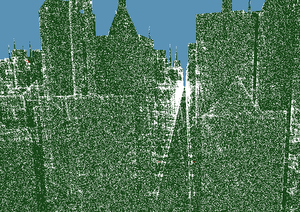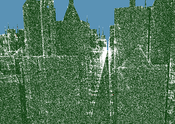Information
- Publication Type: Journal Paper with Conference Talk
- Workgroup(s)/Project(s):
- Date: July 2006
- Journal: ACM Transactions on Graphics
- Volume: 25
- Number: 3
- Note: Proceedings ACM SIGGRAPH 2006
- Location: Boston, USA
- Lecturer:
- ISSN: 0730-0301
- Event: ACM SIGGRAPH 2006
- DOI: 10.1145/1141911.1141914
- Conference date: 30. July 2006 – 4. August 2006
- Pages: 494 – 502
- Keywords: visibility, visibility sampling, occlusion culling, PVS
Abstract
This paper addresses the problem of computing the triangles visible from a region in space. The proposed aggressive visibility solution is based on stochastic ray shooting and can take any triangular model as input. We do not rely on connectivity information, volumetric occluders, or the availability of large occluders, and can therefore process any given input scene. The proposed algorithm is practically memoryless, thereby alleviating the large memory consumption problems prevalent in several previous algorithms. The strategy of our algorithm is to use ray mutations in ray space to cast rays that are likely to sample new triangles. Our algorithm improves the sampling efficiency of previous work by over two orders of magnitude.Additional Files and Images
Weblinks
BibTeX
@article{WONKA-2006-GVS,
title = "Guided Visibility Sampling",
author = "Peter Wonka and Michael Wimmer and Kaichi Zhou and Stefan
Maierhofer and Gerd Hesina and Alexander Reshetov",
year = "2006",
abstract = "This paper addresses the problem of computing the triangles
visible from a region in space. The proposed aggressive
visibility solution is based on stochastic ray shooting and
can take any triangular model as input. We do not rely on
connectivity information, volumetric occluders, or the
availability of large occluders, and can therefore process
any given input scene. The proposed algorithm is practically
memoryless, thereby alleviating the large memory consumption
problems prevalent in several previous algorithms. The
strategy of our algorithm is to use ray mutations in ray
space to cast rays that are likely to sample new triangles.
Our algorithm improves the sampling efficiency of previous
work by over two orders of magnitude.",
month = jul,
journal = "ACM Transactions on Graphics",
volume = "25",
number = "3",
note = "Proceedings ACM SIGGRAPH 2006",
issn = "0730-0301",
doi = "10.1145/1141911.1141914",
pages = "494--502",
keywords = "visibility, visibility sampling, occlusion culling, PVS",
URL = "https://www.cg.tuwien.ac.at/research/publications/2006/WONKA-2006-GVS/",
}


 Preprint
Preprint
